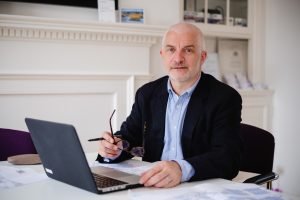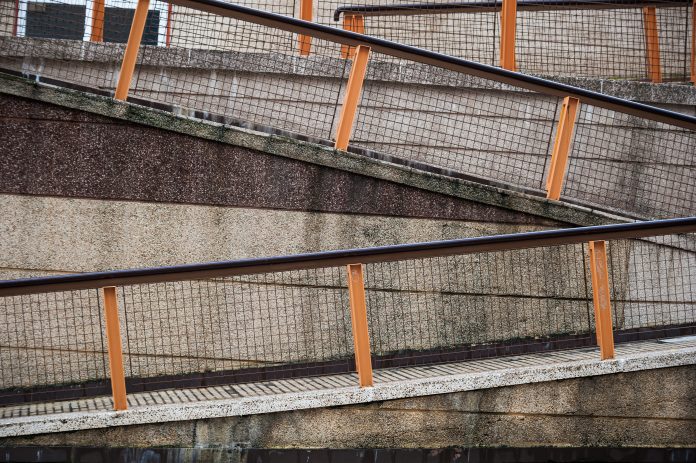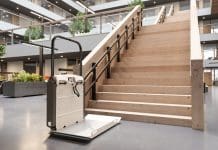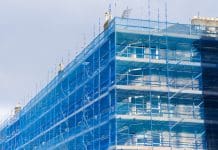Ian Streets, managing director of About Access, marks down the judges who hand out accolades for inaccessible design
There used to be a lovely restaurant near us, a very popular place which won a good few awards for the quality of its food, the friendly and attentive service and the stylish environment.
In some of these awards schemes, the judges called for evidence of accessibility and again the restaurant submitted statements that everything was on one level, the business had made adjustments to its website and had an accessible loo.
The only problem was that, on occasions, the accessible loo would become a store for unwanted equipment – high-chairs was a frequent example. However, it’s unlikely the judges were ever aware of this because they were never known to check accessibility properly and the suspicion is they were merely ticking a box.
The issue arose recently in a discussion on LinkedIn about the Civic Trust Awards and in particular the prize given to the London School of Economics for its Centre Building.
The citation highlighted the project’s achievement in “exceeding the BREEAM Excellent target” and it made much of “encouraging” collaboration and dialogue and of “involving the whole school community” in the “briefing, design development and oversight” of the project. One can only assume that collaboration didn’t extend to consulting with people in a meaningful, pan-disability way.
Accessibility and inclusivity
There’s no mention of accessibility in the LSE citation but the invitation to apply to the awards says the Civic Trust “strongly believes” that projects should demonstrate “a high level of accessible and universal design”.
It may be that all of the other winners are models of accessibility and inclusivity, and if they are then it shows how the failures of just one case study can completely shift the focus of the responses.
Instead of appreciating the splendour and ingenuity, sustainability and – yes, accessibility – of the rest of the winners, the respondents on LinkedIn found themselves drawn to the obvious shortcomings of the LSE entry.
One person, a designer, noted that the steps featured in what presumably was an official approved photograph only had a handrail on one side, making them very difficult to climb for someone who only has the use of their left-hand side.
They noted: “This isn’t an inclusive solution, is it?”
Someone with direct experience of that condition replied: “I could use it but I’d have to turn to the side and do the super slow one step at a time ascension. Totally not safe. Hate designs like this.”
An access officer who contributed said: “If the idea was to celebrate inclusive design a lack of understanding exists.”
A surveyor declined to comment on the specific project but noted: “I do often hear designers say that they ‘can’t’ comply with Building Regulations because it interferes with their design vision. If they can’t do both then they are not very good designers.”
A diversity professional added: “Buildings ought to be inclusive and safe for everyone before even any consideration for awards are made.”
All of which raises the question of why inaccessible buildings should gain such recognition when they are faulty and disabling by design.
Among the Civic Trust’s portfolio is the Selwyn Goldsmith Awards, named after the man described by the trust as the “founding figure of universal design” and bestowing recognition on developments that exceed the requirements of regulations and work for all people, no matter their age, ethnicity, gender or ability.
But the existence of dedicated awards that reward universal design doesn’t take away from the fact that all buildings should be accessible and capable of welcoming all visitors and staff, including those with visible or hidden impairments.
Combining aesthetic excellence and accessibility
You should still invite entrants to set out the measures they have taken to make their products and services accessible because it reminds them of their responsibility to take an inclusive approach. It also challenges designers to combine aesthetic excellence and accessibility, ensuring a property is open to as many people as possible, and it provides an opportunity to reward those who achieve the best outcomes.
And having extended that invitation, take the answers as seriously as you would all the other criteria, maybe by acting on the observation of another LinkedIn respondent, who wrote: “It looks like the ‘whole team’ was missing an accessibility consultant.”
Maybe they were, and maybe even if they had one the developers left them off the list of credits, which tend to be packed with architects and surveyors of all disciplines but routinely missing access consultants and fire engineers.
So, in short, if they’re making claims about accessibility, check them out. And if they don’t stand up to scrutiny, chuck them out.
 About Access Ltd
About Access Ltd
63 Wilson St, Anlaby, Hull, East Yorkshire, HU10 7AJ
Tel: Tel 01482 651101
Please note: this is a commercial profile.














![[VIDEO]What to expect when you’re inspecting: Using DorTrak for fire door inspections](https://www.pbctoday.co.uk/news/wp-content/uploads/2025/02/maxresdefault-218x150.jpg)